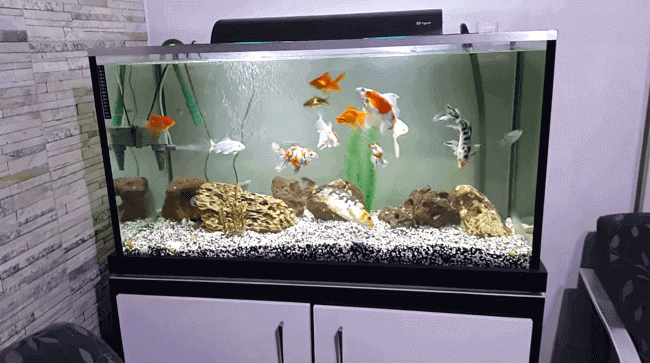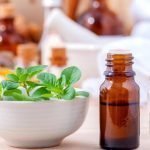Have you ever witness a fish living in pure and crystal clear water? You may also wonder how to cycle a fish tank to achieve the desired results.
Here are some essential steps that you can follow while fish tank cycling process. It’s quite easy, and one should know the basic concepts and the purpose of such a process. The process has a scientific reason behind it, and one must carefully understand and implement such practice to gain its full advantages.
Benefits of Cycling your Tank
You may see that your aquarium is up to date and clean and giving you the visibility of 100%. But the truth is the fishes in your tank actually needs some good bacteria to live with them for a healthily. Such bacteria are an essential bacterium that keeps your aquarium running and also maintain the health of your fishes. They are indeed known as a crucial resource of biological filtrations. Every fish tank needs to maintain biological filtration for keeping excellent water quality for the fishes to survive in their excellent conditions.

These bacteria play a vital role in maintaining the nitrogen supply of your fish tank. Such bacteria helps in removing-
- Excess of fish excrements and remains of dead cells
- Excess of food left in your fish tank
- Remains of dead plant and decaying greenery
- Remains of dead fishes
Such waste material, if not consumed, will produce ammonia levels in your tank, which are toxic for your fishes. Increasing of such toxins will affect the health of your fish by damaging their fins, the problem in gills, swollen in their eyes, algae blooms, loss of their appetite, and finally, death. Such nitrates are incredibly toxic for any aquarium fish. There are many other filtration tricks by which you can perform a similar process. One of the best ways to maintain a healthy nitrogen cycle in your tank to avoid such problems, this can be done by –
Inviting Good Bacteria In Your Fish Tank
There are many ways to introduce a new bacterial population in your tank so that you can ensure that the nitrogen levels in your tank are under control. Some of the best ideas are –
- Addition of strong fishes in your aquarium that can easily survive in high ammonia and nitrites levels until the whole tank is completely cycled. As such, fishes start to settle; they can quickly start the natural biological cycle to initiate in your tank.
- You can also add some of the gravel substrates in your new tank. By doing this, you can introduce the right amount of bacterial population in your tank, and as such waste starts to accumulate, the bacterial colonies will begin to grow.
- You can also dip a fresh filter sponge in healthy tank water before attaching it in your new tank. By doing this, it will stick the bacteria from the healthy tank to the new sponge and subsequently will come to your fresh tank to start their growth.
- You can also add the readymade probiotic mixture in your tank water. The mixes are easily available in your pet shops and fish houses. Make sure that you read the usage procedure carefully before using them. Make sure to add the perfect quantity of such mixture, and it usually depends on the size of your tank.
Ways Regarding How to Cycle a Fish Tank
There are many practical and natural ways by which you can cycle your aquarium. Many of the procedures are difficult and time-consuming, while some are easy and quick to obtain the desired results. Here I would like to suggest some of the most common and easy ways to cycle your aquarium. You must also know the fact that many of the successful aquarian is functioning well by following such an approach.
#1 By Introducing Fishes
It is the most simple and the easiest approach for a beginner and the one who is a veteran fish keeper. It’s very natural that many people cannot observe an empty aquarium for these many days or months so that the beneficial bacteria can grow in a good amount. So here are some essential tips that might be helpful to you –
- In case you are setting up a new tank, start with fewer fish or best to select with only a single fish per gallon of water in your tank. Make sure to choose the hardest and durable species for this purpose.

- Make sure to offer your fish in lesser amounts during the first week and slowly increase the quantity later. The required bacteria feed on the wastage generated by the fish. But in an initial stage as there are not many bacteria, so it is not recommended to overfeed your fish until the bacteria growth is achieved enough to feed well on the wastage.
- In case you want to increase the beneficial bacteria in your tank you can easily lend from some other aquarium by using the filter media. You can even use live nitrifying bacteria to begin the cycle in your tank
- Make sure the quality of the water after every 2 to 3 days. In case you detect the level of ammonia nitrite above say, 0.2 ppm does a partial water change. This will remove all the excess toxins and makes the water safe for your new fish.
- The cycle itself is complete if you add only a limited amount of food per week to your fish. The nitrite level will definitely be fixed at 0 ppm if everything goes well.
- After this, you can slowly add new fish in your aquarium so that the beneficial bacteria keep on growing with their additional waste. You should also know the fact that nitrates are safer for fishes until they are under 40 ppm; above this, it can be harmful.
Still wondering about how to cycle a fish tank you can use this second method.
#2 Cycling With Plants
This is also the best way and easiest also one of the favorites for many owners, as it genuinely converts your tank’s ecosystem naturally. All you have to do is to plant some plants in your tank, and once they show their growth, they will successfully consume the excess ammonia and nitrates that are in your tank.
#3 Fishless Cycling
This is perhaps the most efficient and easy way to cycle your fish tank. The concept involves placing

the fish foods to generate friendly bacteria within the tank. The process may involve several concepts that you have to consider. But you will surely receive desirable results for sure.
Some Common Frequently Asked Questions (FAQs) :
These are some of the common questions asked by various aquarium owners who wish to cycle their tank in order to keep their fishes healthy. I hope such issues will clear your doubts too.
Q1: How long does it take for a fish tank to cycle?
Ans: The cycling process takes nearly six to eight weeks. After passing such duration, the ammonia and nitrate level of your tank water will become acceptable for the fishes.
Q2: Do you have to cycle a fish tank?
Ans: Yes, it is quite necessary to cycle a fish tank so that the water is free from the toxins generated by your fish.
Q3: What does it literary mean to cycle a fish tank?
Ans: Cycling a fish tank means you are establishing a bacteria bed in your tank so that it can remove all the toxins waste generated by your fishes during their metabolism activity throughout the day. The act may also involve introducing a new fish in your tank to perform the desired results.
Q4: How do I know when my tank has cycled?
Ans: When the complete cycling process of your fish tank is finished, you may automatically know as your fish will be free from stress, and you can even check the nitrate level personally in the tank water.
Q5: Can I put fish in my tank after 24 hours?
Ans: Yes, it is often recommended to add fish after 24 hours, the water in your fish tank needs a day time to manage its PH level and its temperature to welcome your new guest.
Q6: Should I can perform water changes during cycling my tank?
Ans: Many people have recommended not to disturb the water after the cycling process is over. They believe that it will disturb the friendly bacteria that want to colonize with your biological filter.
The Final Words
Finally, now you are aware of the process related to how to cycle a fish tank. Make sure that it can take several weeks for the good bacteria to grow in a useful number in a clean or a new tank. It is best to be calm and patient and let the colony of bacteria grow naturally without any rush. A slow and natural growing colony of bacteria will make the nitrogen cycle of your tank more effective.
Rushing and being impatient will destruct all your efforts. Make sure that you should never be in a rush to change the water frequently, and this may also harm your little fishes and delicate corals. Once a complete nitrogen cycle in your tank starts, you will definitely be a proud owner of a healthy aquarium.















